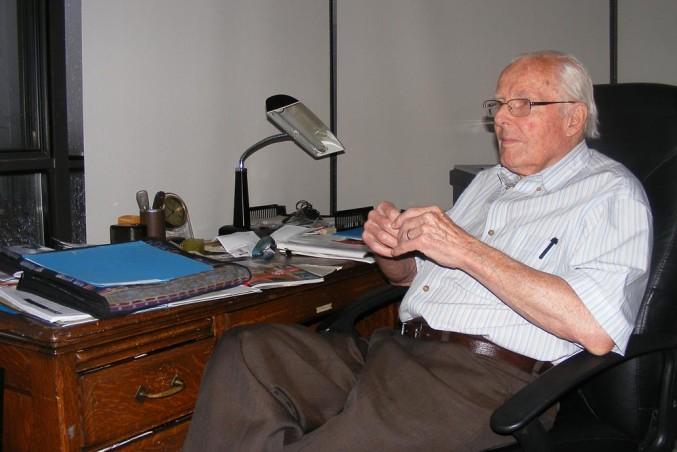Walter Pitman, Ryerson’s President from 1975-1980, is known today for the residence building that shares his name. But what did Ryerson look like during his time at the school? Emma Prestwich sat down with the former President
Ryerson has had a number of different presidents and has undergone many different changes since you’ve left. And I’m sure some students would be interested in knowing what Ryerson was like while you were there.
What was the climate at Ryerson when you came? What the school’s main focus was and whether you had any sort of mandate to change it at all.
It was in a huge process of transition when I was there. It had gone through a very difficult period, a great deal of tension, a great deal of confrontation. When I came, I came down from Trent Universit, to Ryerson, and there were real challenges. It was referred to as Rye High in those days, it wasn’t a university. Nobody knew what a polytechnique was. It was the only one in Ontario. The government didn’t know how to fund one, they had no idea what a polytechnique was about.
While you were there you had a reputation for being very open with faculty and students and holding open meetings.
That’s right. When I first got there [there was a lot of] tension [between faculty, staff and students]. Hell, there had even been an occupation, the year before I was there. The 13th floor had been occupied by students. In fact, we had a difficult time because we were still under an enormous amount of financial pressure, but I said I would sit in the student lounge from nine to nine-thirty or something.
I taught classes at eight in the morning. That did not make me popular with the students. I taught history. But I sat [in the student lounge] between nine and 10, and I would talk to any punk who turned up, and that was how I tried to bridge that gap that developed between the various sectors within Ryerson.
I think that’s what my best thought was, you have to heal this place, it can’t continue in a state of warfare between the various sectors.
You speak about it very positively, your whole experience working there. Do you have any really memorable experiences that stand out?
One of the difficult things I found, because of the financial situation, was that part-time faculty were being exploited.
And I knew that, they knew that, the regular faculty knew that, and I walked the picket line with them, simply because I wanted them to know that I knew there was injustice here and our budget wouldn’t allow us to negotiate more generously because the money wasn’t there.
How do you feel that there’s a residence named after you?
Well, the funny story behind that is that part of the deal for the separation of previous presidents was that they would name buildings after them.
I had been invited to come to the Ontario Arts Council and I had felt I had done my best work for Ryerson, and I was leaving, I was not being fired, and I wanted to make that distinction.
So I said, I don’t want any buildings named after me, so it wasn’t until about 10 or 15 years later that they came and asked, and I said I don’t really want a parking lot named after me. I said we would be very pleased. They made it for my wife and I, knowing how much [of a role] she had played [in my work].
Do you think that Ryerson has shed its Rye High label?
Oh, I think so, yes. I’m sure it has. I can remember going to faculty retreats and singing [an old song about Rye High] at the table. I think probably nobody even knows it anymore.
It has sort of stuck around. There are a few students who say Rye High, but I think it’s just a term that’s persisted, whether or not it has any basis.
I’m sure that’s what it is. It’s because of outstanding people, academically. Rye High was a kind of an indication that this might not have the quality of a university but by god, it’s a damn good high school, but that’s all gone now.










Leave a Reply